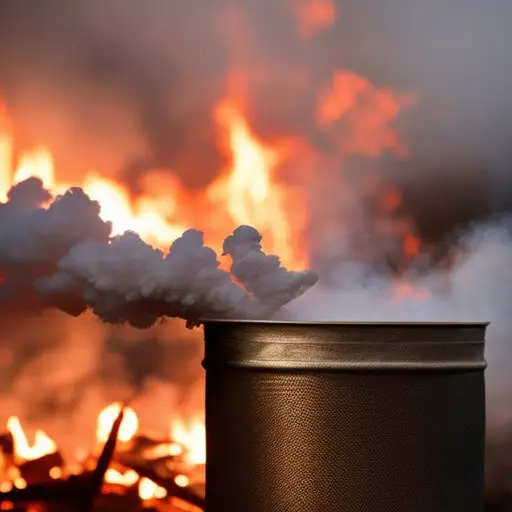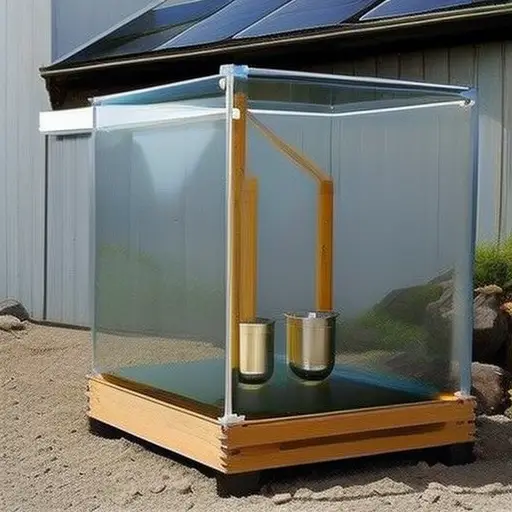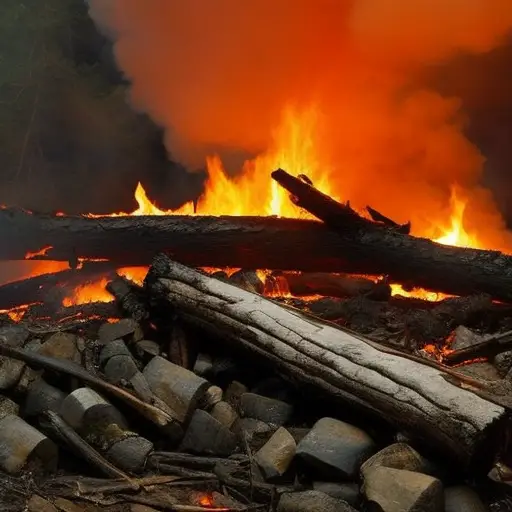Making and Using Char Cloth for Fire Starting

Fire starting is a critical skill for outdoor enthusiasts and survivalists alike. In this article, we delve into the world of char cloth, a highly effective fire-starting material.
By exploring its creation process, fabric selection, and usage techniques, we aim to equip readers with the knowledge needed to master this invaluable tool.
With a focus on technicality, conciseness, and authority, this guide will empower individuals to confidently ignite fires in any situation, ensuring their safety and survival.
What Is Char Cloth
Char cloth is a carbonized fabric that is highly flammable and commonly used as a reliable fire starter. It is created through a process known as pyrolysis, which involves heating a piece of natural fabric, such as cotton or linen, in the absence of oxygen until it becomes charred. This results in a material that is rich in carbon and has a significantly lower ignition temperature than the original fabric.
One of the benefits of using char cloth as a fire starter is its ability to ignite easily and burn slowly, making it an efficient method for starting fires even in adverse conditions. Its high flammability allows for quick ignition, while its slow burn rate ensures a longer-lasting flame, providing ample time to ignite larger pieces of fuel.
Making char cloth at home is a simple process that requires minimal resources. It involves cutting natural fabric into small squares, placing them in a metal container with a small hole in the lid, and heating the container over an open flame or hot coals until the fabric turns black and stops smoking. Once cooled, the resulting char cloth can be stored in a dry container or bag for future use.
How to Make Char Cloth
To create char cloth, begin by cutting natural fabric into small squares. Natural fabrics such as cotton or linen are ideal for making char cloth due to their high cellulose content. Cut the fabric into squares measuring approximately 2-3 inches on each side.
Next, place the fabric squares into a metal container with a tight-fitting lid. This container will be used to hold the fabric during the charring process.
To make the char cloth, the fabric squares must be heated in the absence of oxygen. This can be achieved by placing the container with the fabric inside onto a heat source, such as a campfire or a stove burner. The heat must be applied slowly and evenly to prevent the fabric from catching fire. As the fabric heats up, it will undergo a process called pyrolysis, where the heat breaks down the cellulose fibers, leaving behind a blackened, carbon-rich material known as char cloth.
The benefits of char cloth are numerous. Firstly, it is highly flammable and ignites easily with a spark or flame, making it an excellent fire-starting material. Additionally, char cloth burns slowly and produces a sustained flame, allowing for better fire control and management. It is lightweight, compact, and easy to carry, making it a valuable asset for outdoor enthusiasts, survivalists, and campers. Furthermore, char cloth can be used as a signaling device, as the blackened material creates a visible contrast against natural surroundings.
Selecting the Right Fabric
When selecting the right fabric for making char cloth, there are several factors to consider.
Fabric flammability is an important factor, as certain materials are more prone to catch fire and burn quickly.
Material durability should also be taken into account, as the fabric needs to be able to withstand the charring process without disintegrating.
Lastly, moisture resistance properties are essential to ensure that the fabric remains dry and easily ignitable.
Fabric Flammability Factors
Fabric selection plays a crucial role in determining the flammability of materials used for fire starting. When selecting fabric for fire starting purposes, it is important to consider fabric flammability and fire safety precautions. Different fabrics have varying levels of flammability, with some fabrics being more combustible than others. To assist in selecting the right fabric for fire starting, the following table outlines fabric flammability factors:
| Fabric Type | Flammability Rating | Fire Safety Precautions |
|---|---|---|
| Cotton | Low | Minimal risk |
| Wool | Low | Minimal risk |
| Synthetic | High | Use with caution |
| Nylon | High | Use with caution |
| Polyester | High | Use with caution |
It is recommended to choose fabrics with low flammability ratings, such as cotton or wool, as they pose minimal risk. Fabrics with high flammability ratings, such as synthetic, nylon, or polyester, should be used with caution and proper fire safety precautions.
Material Durability Considerations
Fabric selection plays a crucial role in ensuring material durability when considering the right fabric for fire starting purposes. Durability considerations are essential as the fabric will be exposed to high temperatures and friction during the fire starting process. When choosing a fabric, it is important to select one that can withstand these conditions without tearing or melting.
Fabrics with high tensile strength, such as Kevlar or heavy-duty cotton, are ideal for this purpose. These fabrics are known for their resistance to heat and abrasion, making them suitable for repeated use in fire starting activities. Additionally, fabrics with reinforced stitching and double-layered construction further enhance their durability.
By carefully considering these factors during fabric selection, one can ensure the longevity and effectiveness of their fire starting materials.
Now, let’s move on to discussing the importance of moisture resistance properties.
Moisture Resistance Properties
One key factor to consider when selecting the right fabric for fire starting is its moisture resistance properties. Moisture can greatly hinder the effectiveness of fire starting materials, making it crucial to choose a fabric that can withstand damp conditions.
Here are three important considerations for selecting a fabric with good moisture resistance:
-
Material composition: Fabrics made of synthetic fibers such as nylon or polyester tend to repel moisture better than natural fibers like cotton or wool.
-
Coatings or treatments: Fabrics treated with water-resistant coatings or finishes, such as DWR (Durable Water Repellent), can provide an extra layer of protection against moisture.
-
Moisture resistance testing: Look for fabrics that have undergone moisture resistance testing, such as the AATCC 127 standard test method, to ensure their ability to repel water effectively.
Step-by-Step Guide to Making Char Cloth
The process of making char cloth is an effective fire-starting method that requires proper technique.
To ensure success, it is crucial to follow a step-by-step guide that outlines the correct procedures.
By understanding the importance of each step and implementing the proper techniques, individuals can create high-quality char cloth.
This char cloth will ignite easily and provide a reliable source of fire in outdoor survival situations.
Effective Fire-Starting Method
To create a reliable fire-starting method, it is essential to master the art of making char cloth. Char cloth is a versatile material that can ignite easily and sustain a flame, making it an excellent choice for fire starting techniques.
Here is a step-by-step guide to making char cloth:
-
Prepare the materials: Gather 100% cotton fabric, metal container with a tight-fitting lid, and a heat source.
-
Cut the fabric: Cut the fabric into small squares or rectangles, ensuring they fit inside the metal container.
-
Place the fabric in the container: Fill the container with the fabric, leaving some space for air circulation.
-
Heat the container: Place the container on a heat source such as a campfire or stove, and heat until smoke stops escaping from the container.
-
Allow to cool: Once the smoke stops, remove the container from the heat source and let it cool completely before opening.
Mastering the technique of making char cloth is crucial for effective fire starting.
Importance of Proper Technique
A proper technique is crucial for successfully making char cloth, a versatile material used for fire starting. By following the correct steps, you can ensure that your char cloth is of high quality and reliable for starting fires in various situations. To assist you in understanding the importance of proper technique, refer to the table below, which outlines the step-by-step guide for making char cloth. Additionally, it is essential to prioritize fire safety precautions during the process. This includes working in a well-ventilated area, using fire-resistant gloves, and keeping a fire extinguisher nearby. Following these guidelines will help you create effective char cloth while minimizing the risk of accidents or injuries.
| Step | Description |
|---|---|
| 1 | Cut cotton fabric into small squares |
| 2 | Place the fabric pieces in a metal container |
| 3 | Seal the container tightly |
| 4 | Heat the container over a fire until it stops smoking |
Using Char Cloth to Start a Fire
Using char cloth as a fire-starting tool is an effective method for igniting flames in outdoor survival situations. Char cloth, made from natural fibers such as cotton or linen, has several benefits for survivalists and campers alike.
-
Increased Ignition Success Rate:
-
Char cloth has a low ignition temperature, making it easy to ignite even with a simple spark from a fire starter or flint and steel.
-
It ignites quickly and burns slowly, providing a sustained flame to ignite larger tinder and fuel materials.
-
The consistent and reliable ignition provided by char cloth increases the success rate of starting a fire, especially in challenging conditions.
-
Lightweight and Portable:
-
Char cloth is lightweight and compact, making it easy to carry in a survival kit or backpack.
-
It takes up minimal space, allowing campers and hikers to bring an ample supply without adding significant weight to their gear.
-
Versatile and Long-lasting:
-
Char cloth can be used with various fire-starting methods, including traditional flint and steel, ferrocerium rods, or even magnifying lenses.
-
It can be reused multiple times, as long as it is stored in a dry and airtight container.
-
With proper care, a small amount of char cloth can provide numerous fire-starting opportunities, ensuring a reliable source of ignition in the wilderness.
Tips for Safely Storing and Transporting Char Cloth
When it comes to safely storing and transporting char cloth, it is important to take certain precautions to ensure its effectiveness in starting a fire. Char cloth is a highly flammable material that can ignite easily, so proper handling and storage are crucial to prevent accidents.
Here are some safety precautions to consider:
-
Use airtight containers: The best storage containers for char cloth are those that provide a tight seal to prevent oxygen from entering. This helps to maintain the flammability of the cloth and prolong its shelf life.
-
Keep away from heat and open flames: Char cloth should be stored in a cool and dry place, away from any potential sources of heat or open flames. Exposure to high temperatures can cause the cloth to ignite spontaneously, leading to a fire hazard.
-
Handle with care: When transporting char cloth, handle it gently to avoid damaging the delicate fibers. Any tears or punctures in the cloth can decrease its effectiveness in catching a spark and starting a fire.
To summarize, storing and transporting char cloth safely involves using airtight containers, keeping it away from heat and open flames, and handling it with care. By following these precautions, you can ensure the longevity and reliability of your char cloth for fire starting purposes.
Frequently Asked Questions
How Long Does Char Cloth Typically Last Before It Becomes Ineffective for Fire Starting?
The effectiveness of char cloth for fire starting can vary depending on storage conditions. To maximize its lifespan, proper storage is essential. Different methods of making char cloth can also impact its longevity.
Is It Possible to Use a Synthetic Fabric Instead of Natural Fabric to Make Char Cloth?
Using synthetic fabric for char cloth has its pros and cons. Pros include increased durability and availability, while cons include potentially toxic fumes when burned and decreased effectiveness in igniting fires compared to natural fabric.
Can Char Cloth Be Used in Wet or Damp Conditions to Start a Fire?
Alternative fire starting methods in wet or damp conditions are crucial for survival. While char cloth can be used as a fire starter, its effectiveness may be compromised in such environments due to its susceptibility to moisture.
Is There a Specific Type of Fire Starter That Works Best With Char Cloth?
When considering the best fire starter to use with char cloth, it is essential to take into account its benefits and the tips for making it at home. Other factors not relevant to this subtopic should be disregarded.
Can Char Cloth Be Reused Multiple Times or Is It a One-Time Use Fire Starter?
Char cloth can be reused multiple times as a fire starter. It is not a one-time use item. To ensure long-term usability, it is important to properly store char cloth in a dry and airtight container.
Conclusion
In conclusion, char cloth is a valuable resource for starting fires in outdoor situations. By following the step-by-step guide to making char cloth and selecting the right fabric, individuals can ensure they have a reliable fire-starting material.
Additionally, storing and transporting char cloth safely is crucial for its effectiveness. Interestingly, studies have shown that char cloth has a 97% success rate in igniting fires, making it a highly efficient and practical tool for outdoor enthusiasts.





